The Qualcomm Snapdragon 820 Performance Preview: Meet Kryo
by Ryan Smith & Andrei Frumusanu on December 10, 2015 11:00 AM EST- Posted in
- SoCs
- Snapdragon
- Qualcomm
- Snapdragon 820
CPU Performance, Cont
Having taken a look at Snapdragon 820 and the Kryo CPU from an architectural perspective, let’s look at our higher level benchmarks. We’ll start as always with the web benchmarks.

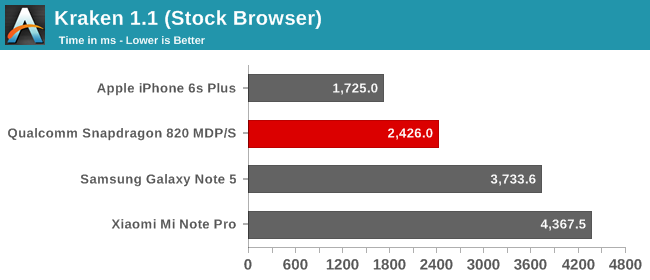
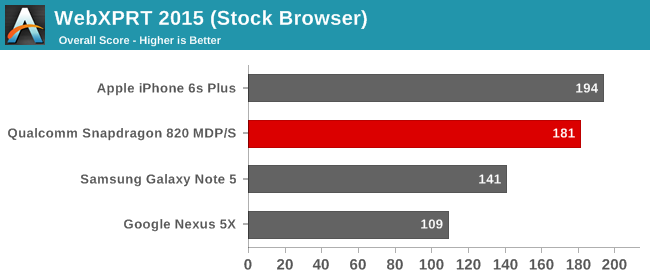
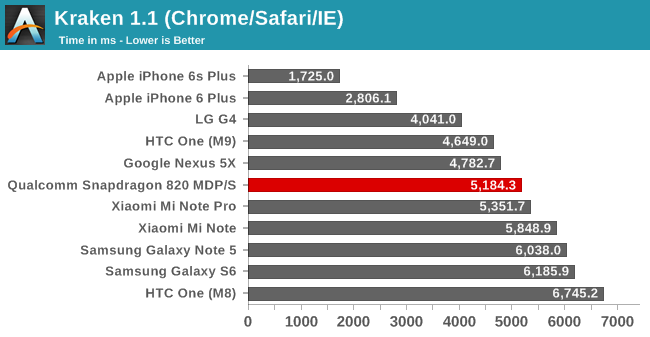

There are two things we can immediately take away from these results. The first is that currently Google Chrome is incredibly unoptimized for Kryo, and this is something Qualcomm was also quick to mention. We won’t wax on about this as there’s nothing to say we haven’t said before, but Chrome could certainly stand to implement optimized JS engines sooner.
Otherwise if we look at Qualcomm’s native browser, things are greatly improved. Relative to both the Exynos 7420 (A57) powered Note 5 and the Snapdragon 810 (A57) powered Mi Note Pro, the MDP/S shows a significant lead. In fact it pretty much blows past those devices in Kraken. However while it easily takes the top spot for an Android device, even with Qualcomm’s native browser the 820 isn’t going to be able to catch up to the iPhone 6s Plus and its A9 SoC.

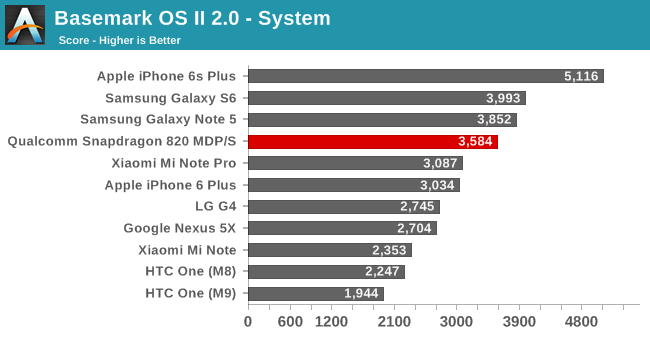
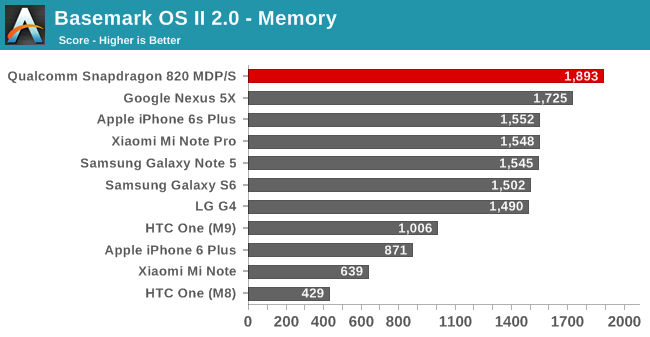
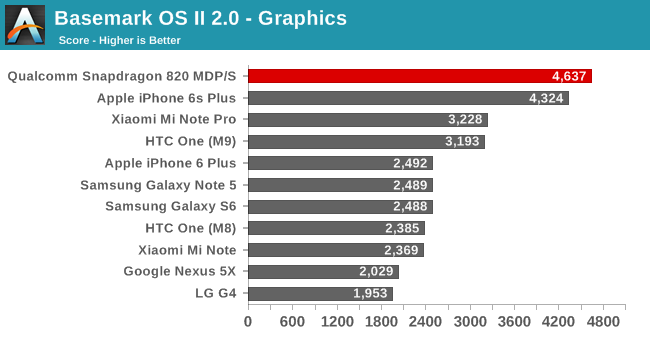
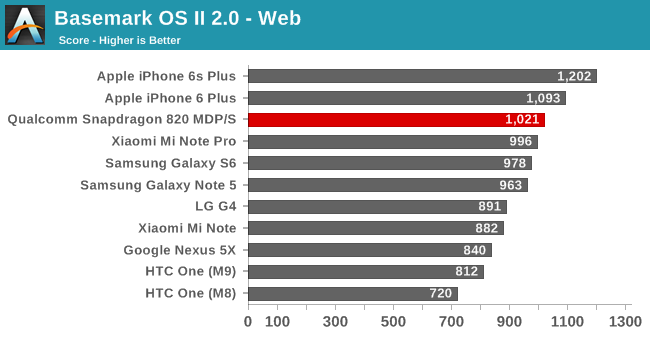
Basemark OS II 2.0 on the other hand is less consistent. The overall score again pegs the MDP/S as the best Android device, and by over 20%. However for reasons yet to be determined, the system score is still below the latest Samsung devices. Instead where the 820 shows a clear lead is with the storage (memory) score and the graphics score. In some cases it’s even beating the iPhone 6s Plus, though overall it will fall short.

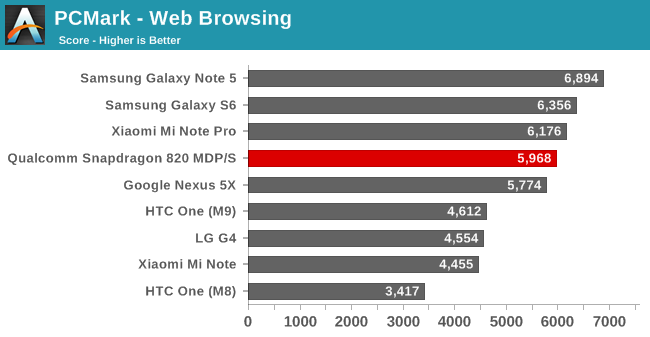
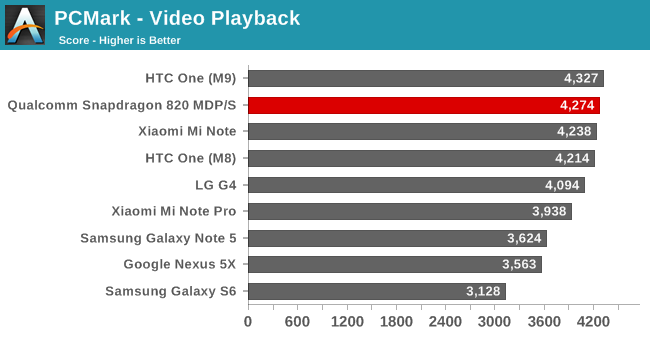
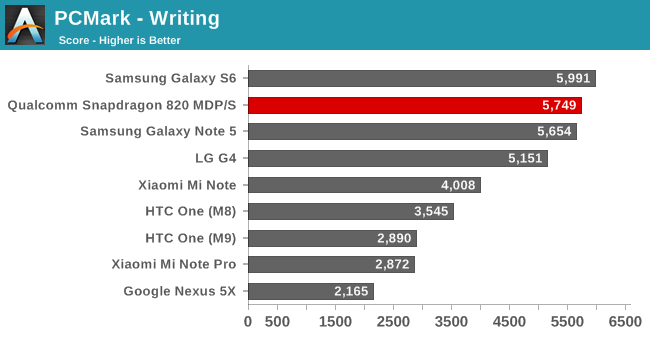
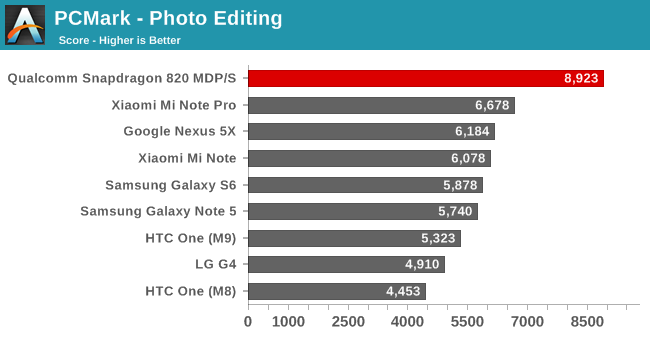
Our final system benchmark, PCMark, once again puts the MDP/S in a good light overall, while the individual sub-tests are more widely varied. Likely owing to the same optimization issues that dogged Chrome performance, web browsing performance trails the A57 devices. Meanwhile video playback closely trails the Snapdragon 810 powered HTC One M9, and writing performance won’t quite surpass the Galaxy S6. Where the 820 MDP/S makes up for it is in the photo editing score, which is through the roof. Here Qualcomm’s development device holds a 34% performance lead over the next-fastest device, the 810/A57 based Mi Note Pro.










146 Comments
View All Comments
StrangerGuy - Friday, December 11, 2015 - link
A Helio X10 SoC found on phones <$200 is already massively overkill for the general user, Android inefficiencies or not.Last time I checked $600+ devices had a laughingly tiny 5% share in total Android sales last quarter and that of course is something Qualcomm would not mention in their marketing. The truth is hardly anybody cares about high-end SoCs outside synthetic benchmark whores that roams tech review sites.
Mondozai - Saturday, December 12, 2015 - link
Apple has 13-14% market share and they only do premium devices. You adf the Android space and you get close to 20% of TAM.You're ignorant.
Constructor - Saturday, December 12, 2015 - link
What you're describing together with the fact of Apple's double-digit total market share is actually a symptom of the fact that Android has almost completely lost the high end of the market to Apple (which is reflected by Apple raking in almost all the profits in the industry).Which of course is a major problem for Qualcomm: Android devices are not selling at prices comparable to Apple's, meaning that even the high-end Android devices are usually sold at steep discounts which in turn puts major price pressure on the device makers to fight for low component prices. which then effectively caps Qualcomm's pricing range much lower than they probably need to finance their expensive CPU development while they're still trying to catch up to Apple.
babadivad - Thursday, December 10, 2015 - link
Sounds like a 64bit Krait CPULochheart - Friday, December 11, 2015 - link
Don't forget that Apple has already 3 generations of 64bit Soc. This is the first from Qualcomm (in terms of custom ARM).melgross - Thursday, December 10, 2015 - link
I don't think it's fair to blame the processes. Apple ran on the same processes, and didn't have any problems. The problem was in the design of the chip. Let's just get that out there, instead of throwing blame elsewhere.xboxfanj - Friday, December 11, 2015 - link
Ryan, there is a compiler that accepts Kryo as a target (Qualcomm's LLVM/Clang fork)https://developer.qualcomm.com/download/snapdragon...
Babar Javied - Friday, December 11, 2015 - link
Last page (closing Thoughts), second paragraph, last line. "not a full-size tablet has was the case in the past couple of generations" I think you meant to say "as" not "has".V900 - Friday, December 11, 2015 - link
It's hard to be wildly optimistic with how the 820 will perform out in the wild next year.Let's not forget, that everything looked swell with the 810, when Anandtech tested the MDP for that SOC.
http://slatedroid.info/2015/02/anandtech’s-snapdragon-810-preview-no-overheating-issues-spotted/
phoenix_rizzen - Monday, December 21, 2015 - link
Don't forget that the S810 MDP was a tablet form factor, with all the extra cooling and battery and what-not that comes with it, while all the phones using the S810 are in the sub-6" category. Big difference!The S820 MDP is a phablet form factor, so it should be closer to the reality of using an S820 SoC in a sub-6" phone.